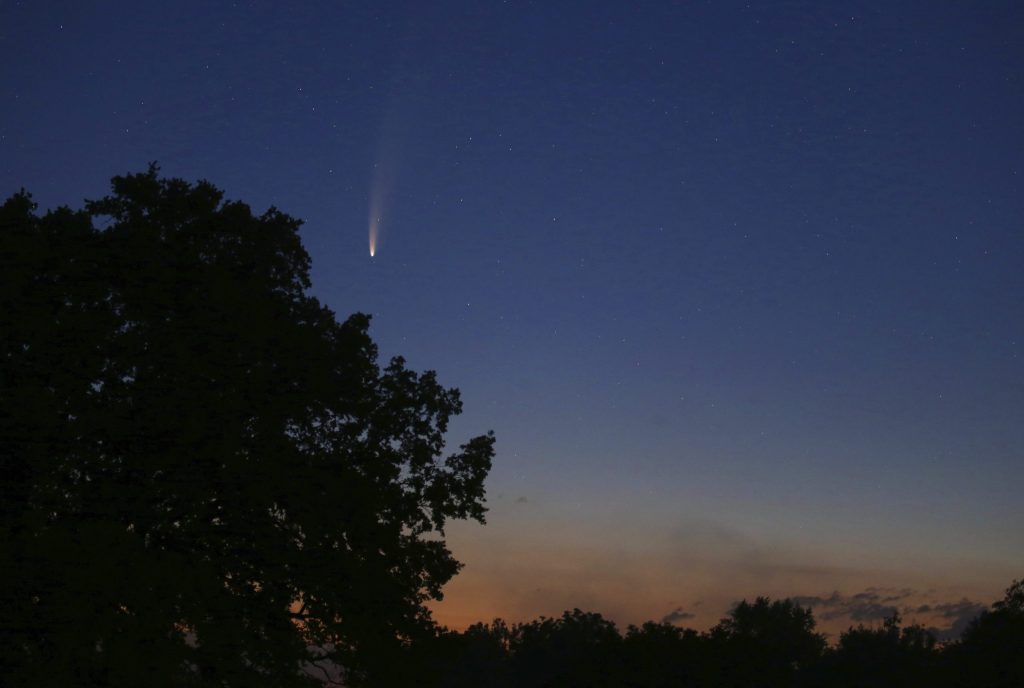Bright, rare comet lighting up Canadian skies for next few days

Posted July 12, 2020 5:23 pm.
Last Updated July 12, 2020 7:25 pm.
WINNIPEG (CITYNEWS) – Stargazers across Canada and the world have been catching rare glimpses of the brightest comet of the last two decades – and there’s still time to do so.
Comet Neowise, named after the satellite that first discovered it, is headed toward Earth and will continue to light up the night sky for the next few days. The best times to see it are just after sunset and around 3 a.m.
Scott Young, manager of the Planetarium at the Manitoba Museum says the comet, which is composed of rock and ice, dates back to the origin of the solar system.
“Most of the time, these are not something you can see without a telescope,” said Young. “But once in a while, one of these comets surprises us and gets brighter than expected, and that is what we are seeing here. It is visible to the unaided eye and from a location away from city lights.
“It’s really cool to see a comet like this. This is probably, almost certainly, the first time that any humans have seen this particular object.”
Young says the comet will get as close as 100 million kilometres from Earth, which is normally too far to be seen with the naked eye.
“For whatever reason, this comet has melted a lot and the tail has grown very big and bright, and that’s what we’re able to see from this distance,” he said.
Another shot from Friday morning! Stacked to bring out more of the brilliance of all the stars and nocilucent clouds! THIS one, I would be proud to hang on my wall! I can't wait to shoot #NEOWISE again!❤️#comet #cometNEOWISE #StormHour #noctilucentclouds #NOCs #Manitoba #Canada pic.twitter.com/Y2AUbPAL0e
— Shannon Bileski☈ (@shannbil) July 11, 2020
Photographer Shannon Bileski has captured several snapshots of the comet in the last few days. She says her photos were made even better by the presence of very vibrant clouds in the upper atmosphere.
“They’re very incredible to see and I knew the spot that I wanted to hit, try to hit the comet and that’s where I went,” said Bileski, whose bucket list included photographing a comet. “Get out, see it, shoot it. It’s pretty amazing to see.”
The last time a comet of this calibre was visible from Earth was Comet Hale-Bopp in 1997, according to Young. He says Comet Neowise is not expected to re-enter our solar system for another 6,000 years.
“They could happen at any time,” said Young. “They’re very unpredictable. We don’t know where they all are, and sometimes a new discovery like this one will come out of nowhere and just surprise us.
“Astronomers have basically dropped everything they are doing to take advantage of this limited opportunity.”








